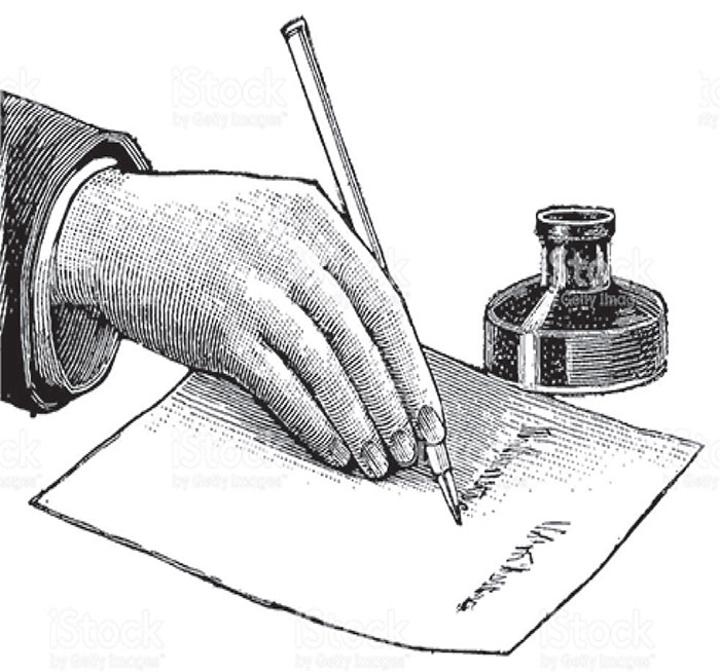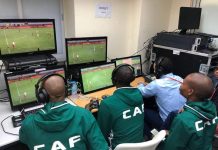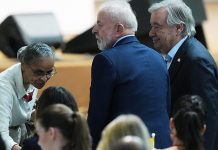Africa-Press – Eritrea. In recent weeks, TPLF remnant forces and allied militias carried out a spate of heinous reprisal attacks against Eritreans in the so-called “refugee camps” in Tigray Region, Ethiopia.
These vicious and utterly deplorable attacks have generally been overlooked by mainstream, corporate, media. Regrettable and unfortunate as this blatant information suppression is, it is hardly surprising. For months now, most western media outlets have either totally ignored or greatly downplayed the TPLF’s insurrectionist acts of war with its grave consequences for regional peace and stability.
The UNHCR has, predictably, joined this chorus of silence even if it has belatedly issued a banal statement accusing “all involved parties”. This is not totally unexpected, particularly in light of the fact that for years the UNHCR has flagrantly abused its institutional mandate to spearhead and collude in the campaign targeting Eritrean youth.
The political backdrop behind this concerted policy was the Eritrea-Ethiopia border war and subsequent shift of US/European regional policies.
Between May 1998 and June 2000, Eritrea and TPLF-led Ethiopia fought the largest and deadliest conventional war in contemporary African history. The brutal conflict led to the death or injury of tens of thousands, large-scale displacement of civilians, and devastatingly high economic, infrastructural, and development costs for both countries. At its fundamental core, the war was the result of the TPLF’s expansionist policies, as well as its desire to roll back Eritrea’s independence.
Following the failed attempts to force “regime change’’ and erase Eritrean independence through military invasion, the TPLF and its principal allies initiated a multifaceted effort to achieve their aims via other less direct routes and mechanisms. In particular, these efforts included “isolation, destabilization, sanctions and economic warfare, vilification and psychological operations, and degrading the country’s ability to develop or defend itself”. These subterfuges were accompanied by massive financial injection – to the tune of 40 billion US dollars – to prop up and “lionize” the surrogate TPLF regime.
Indeed, as the TPLF militarily occupied large swathes of sovereign Eritrean territory and carried out repeated military attacks or incursions, in direct violation of international law and UN agreements, the West, led by the US, showered it with billions in aid and military armaments, shielded it from all criticism or censure, and provided it with vital diplomatic and political cover.
At the same time, Western-financed groups, including Human Rights Watch, Freedom House, and Amnesty International (AI), among others, worked closely with the TPLF to produce an incessant stream of disinformation, denigration, and smears against Eritrea. (In fact, a leaked 2011 confidential memo from AI headquarters instructed employees in the field to “bring about change [in Eritrea] as has happened in other African and Arab countries”).
In 2009 and 2011, TPLF and US diplomats and intelligence officials collaborated to hoodwink the international community and engineer an unjust, illegal sanctions regime against Asmara. For years, TPLF officials also incessantly lobbied Western governments to cut off aid to, investment in, and cooperation with Eritrea, in the hopes of “making the economy scream” and “strangling” the country into submission.
Another critical dimension of the “full spectrum press” against Eritrea was the targeting of the latter’s human resources, particularly its young population. Specifically, the aim was to wean the youth from national service in order to downgrade Eritrea’s defense and developmental capabilities.
In Eritrea, the 18-months long national service – which may be prolonged in times of war – is a critical national institution and an important foundation of the country. Not only does it ensure the nation’s security and defense, it also promotes development, raises human capital, helps instill key socio-cultural values among participants, and fosters cohesion and nation-building.
Accordingly, for Eritrea’s arch-enemies, targeting the institution assumed massive significance. If the national service could successfully be hollowed out and weakened, the presumption was Eritrea’s defense capabilities would be severely impaired.
The principal conduit for implementing this malicious policy was the UNHCR. Although it has long portrayed itself as neutral, the organization has often been used as a potent, pliable tool by its principal and powerful back-donors.
In order to provide a veil of legitimacy and hide the true intent of the scheme, in 2009 and 2011, the UNHCR issued two “Eligibility Guidelines” on Eritrea. Simply, these advocated for the extension of “blanket asylum rights to all Eritrean migrants”, especially the youth and national service members.
Although the documents were issued supposedly to “assist decision-makers, including UNHCR staff, Governments and private practitioners in assessing the protection needs of Eritrean asylum-seekers”, they were characterized by glaring errors, exaggerated and fabricated information, and a complete lack of context.
Notably, despite the fact that the UNHCR maintained an office in Eritrea, and could thus evaluate first-hand the objective realities on the ground in the country, it instead relied on dubious and compromised sources, including individuals who had never set foot in Eritrea; so-called “experts and authoritative figures” who had actually been completely and utterly discredited many times over; groups that had openly and persistently advocated for “regime change” in the country; and, entities with shadowy ties to Western and TPLF intelligence services.
Subsequently, in contravention of normal operating procedures (as well as basic standards of decency to the host country), the documents were circulated quietly and confidentially to various countries while the Government of Eritrea was left in the dark throughout the entire process.
Eritrea subsequently raised reasonable and valid objections, and requested that the UNHCR review and rectify its reports and recommendations. But these were invariably and disrespectfully ignored.
The UNHCR’s Guidelines, assiduously accompanied as they were by explicit campaigns to encourage Eritrean youth to cross over to neighboring countries from which they would be “resettled” in third counties – usually Europe, Canada, Australia and the US – has been the principal factor behind disproportionate migration of Eritreans in the past decade.
Indeed, tens of thousands of other Africans – including Ethiopians, Sudanese, Somalis, and others – were also prompted to seek refugee status posing as “Eritreans” due to the perceived ease of acquiring refugee status under this label. At one point in time, the Austrian Ambassador to Ethiopia confirmed that 60% of “refugees” in Austria were in fact Ethiopians posing as Eritreans. This was not a unique case but broad representation of the reality in other western countries too.
UNHCR’s inexcusable demeanor is not limited to these deplorable acts. There is overwhelming evidence of its full cooperation with TPLF officials and its refugee arm – ARRA – in the past years in various illicit activities, including intelligence gathering, recruitment for subversive agendas and financial embezzlements – that are incompatible with UNHCR’s humanitarian mandate.
In a nutshell, UNHCR has much to answer for as it has been mired in, and is guilty of, complicity in politicized human trafficking of Eritrean youths.







